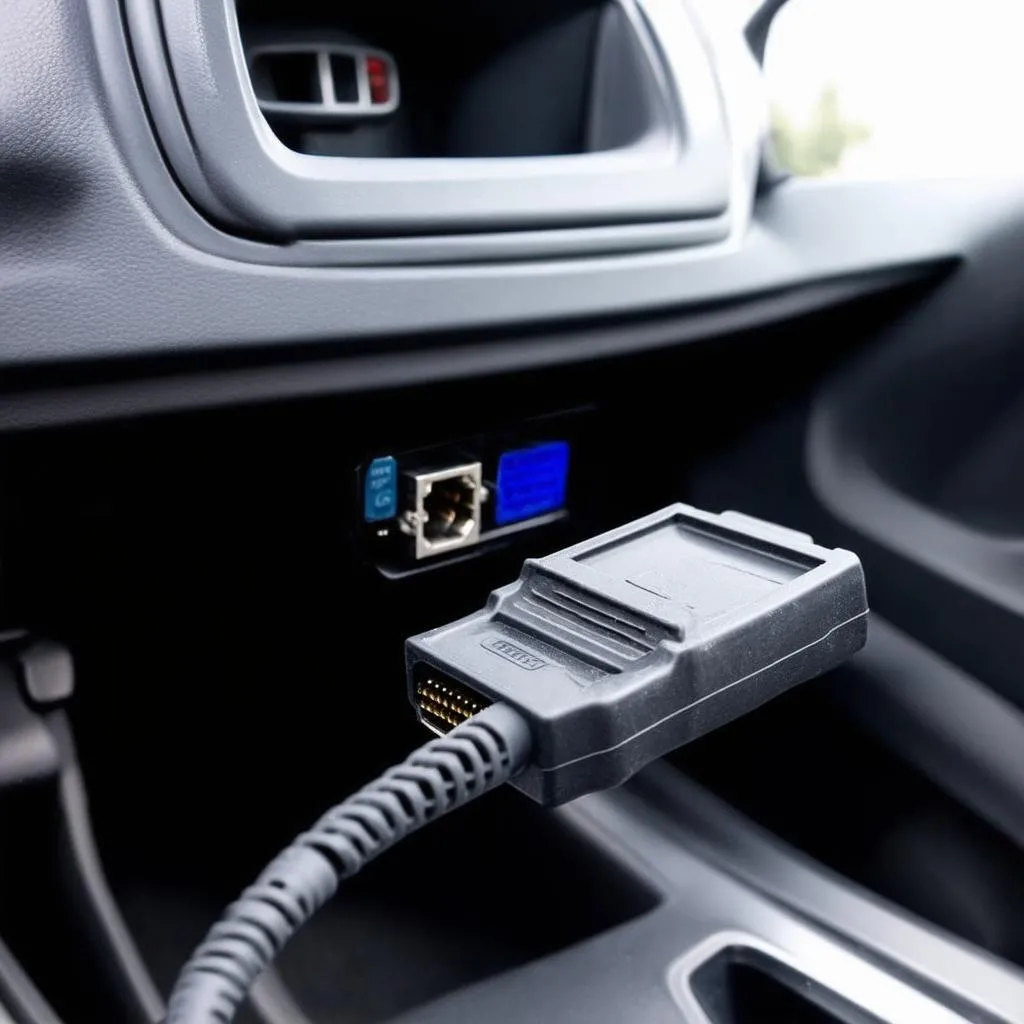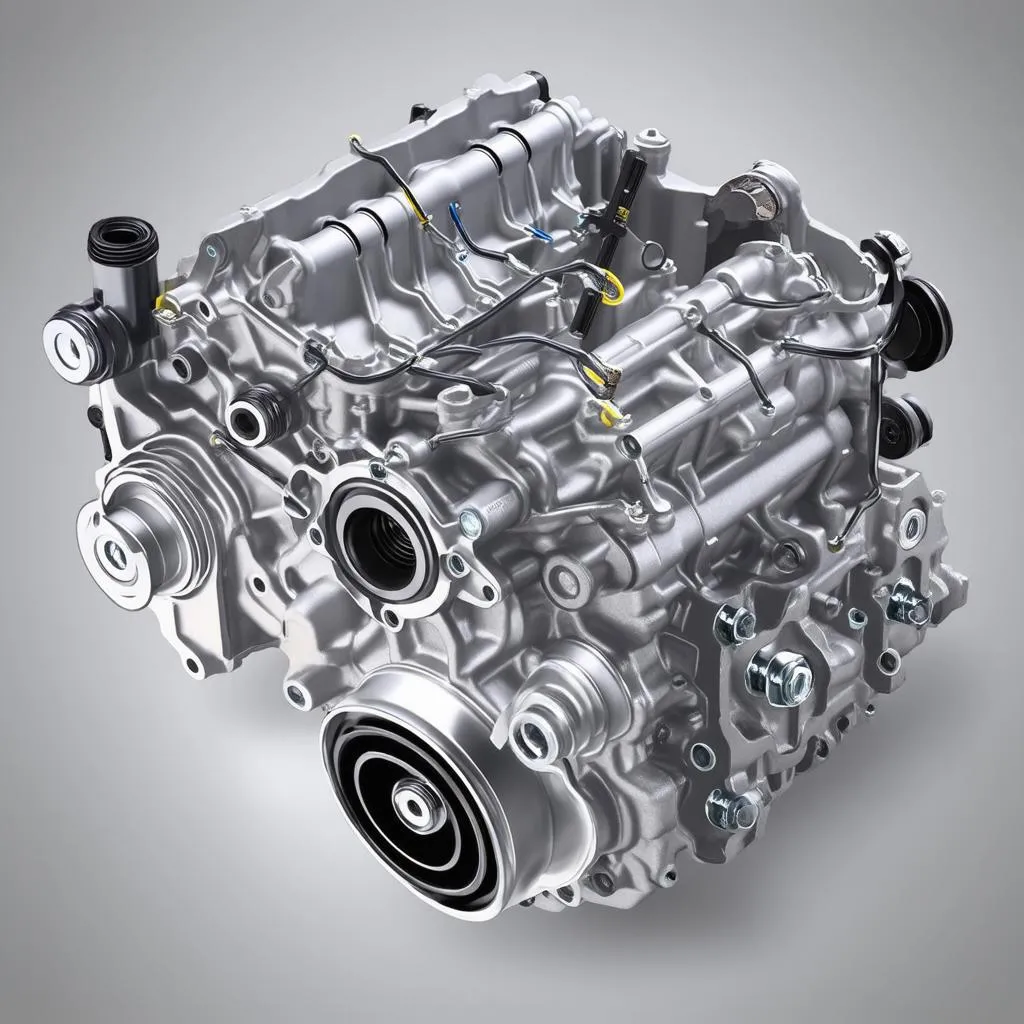Have you ever experienced a sudden jolt or hesitation while driving, and wondered if it might be a transmission problem? You’re not alone. Transmission issues can be a nightmare, but thankfully, modern technology can help us diagnose them. One common tool that many car owners have access to is the OBD scanner. But the question is, can an OBD scanner actually detect transmission problems?
What is an OBD Scanner?
The OBD (On-Board Diagnostics) system is a standardized diagnostic system built into most modern cars. The OBD scanner is a tool that plugs into the OBD port (usually located under the dashboard) and reads the data stored in the car’s computer.
Imagine the OBD system as the car’s “black box,” recording every detail about its performance, similar to how the black box on an airplane records crucial information in case of an accident. This information can be incredibly useful for mechanics and car owners alike.
What Transmission Problems Can an OBD Scanner Detect?
Transmission Control Module (TCM) Codes:
OBD scanners are very effective at identifying problems related to the Transmission Control Module (TCM). The TCM is the “brain” of the transmission, controlling its various functions, such as gear shifting and torque management. When the TCM detects an issue, it often sets a diagnostic trouble code (DTC).
For example, an OBD scanner might pick up a code like “P0740 – Torque Converter Clutch Circuit Malfunction.” This code signals a problem with the torque converter clutch, which plays a crucial role in smooth gear transitions.
Sensors and Actuators:
OBD scanners can also help identify problems with various sensors and actuators that impact transmission performance. These include:
- Speed Sensors: These sensors monitor the speed of the engine, transmission, and wheels. Malfunctions in these sensors can lead to inaccurate gear shifting and improper transmission operation.
- Pressure Sensors: These sensors measure the hydraulic pressure within the transmission system, which is essential for gear selection and clutch engagement.
- Solenoid Valves: These valves control the flow of hydraulic fluid throughout the transmission. If a solenoid valve malfunctions, it can cause erratic shifting or a complete loss of transmission function.
Limitations of OBD Scanners:
While OBD scanners are powerful diagnostic tools, they have limitations when it comes to transmission problems. They can’t always identify every single issue.
For example, a problem with a faulty transmission valve body might not register a specific code on an OBD scanner. This is because the valve body is a complex assembly, and its issues may not be easily identified by the TCM.
How to Use an OBD Scanner to Detect Transmission Problems:
- Connect the Scanner: Connect the OBD scanner to the OBD port under your dashboard.
- Read the Codes: The scanner will read the DTCs stored in the car’s computer.
- Interpret the Codes: Use the scanner’s built-in code library or online resources to understand the meaning of the codes.
- Check for Common Symptoms: Compare the codes to common transmission symptoms, such as rough shifting, slipping gears, or complete transmission failure.
What if the OBD Scanner Doesn’t Detect a Transmission Problem?
If the OBD scanner doesn’t pick up any codes related to your transmission, it doesn’t necessarily mean that there’s no issue. Here are some other factors to consider:
- Intermittent Problems: Some transmission problems are intermittent, meaning they only occur under specific conditions. These problems might not be immediately detectable by the OBD scanner.
- Sensor Errors: Sometimes, the transmission itself is fine, but a faulty sensor is sending incorrect readings to the TCM. This can trigger false codes.
- Mechanical Issues: Even if the OBD scanner doesn’t pick up any codes, there could still be a mechanical issue within the transmission itself.
Important Note: It’s always recommended to consult a qualified mechanic for a comprehensive diagnosis. An OBD scanner can be a helpful tool, but it’s not a replacement for professional expertise.
Other Common Questions About OBD Scanners:
Can I use a generic OBD scanner for my European car?
Some generic OBD scanners may work with European cars, but others may not. European cars often have different communication protocols, so it’s essential to get a scanner that is compatible with your specific make and model.
Is there a way to clear the codes on an OBD scanner?
Yes, most OBD scanners allow you to clear the codes. However, it’s important to note that simply clearing the codes doesn’t fix the underlying problem.
Do I need a specific OBD scanner for transmission problems?
While a standard OBD scanner can be useful, a specialized transmission scanner might be required for more complex diagnostic work. These specialized scanners can access deeper levels of transmission data and identify issues that a generic scanner may miss.
Conclusion
OBD scanners are valuable tools for diagnosing car problems, including some transmission issues. They can identify codes related to the TCM, sensors, and actuators, giving you valuable insights into the health of your transmission. However, remember that OBD scanners are not a magic bullet. They have limitations, and a thorough diagnosis by a professional mechanic is still crucial.
If you suspect a transmission problem, don’t hesitate to seek professional help. Remember, a well-maintained transmission is essential for a smooth and reliable driving experience.
Need help with your car’s diagnostics? Contact us at +84767531508 for expert assistance with diagnostics tools and 24/7 support.
 OBD scanner
OBD scanner
 Transmission
Transmission
 Mechanic
Mechanic